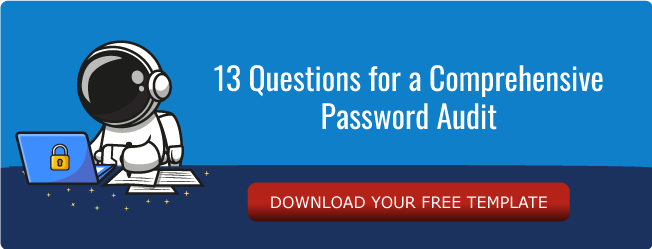If you're reading this article, you’re well aware of WHY data security matters. The trick, as always, is in the HOW. How do you actually reduce your business data risk? Where are your biggest risk points and how do you actively reduce your risk exposure?
The answer is onions. Like a good onion, good security is all about layers. A layered approach to security measures protects against data breaches, privacy violations, and data mismanagement.
Here's how you can build these layers to reduce risk and protect your business:
|
Included in this post: |
Data Security Policies
Establish clear data security policies that outline how data should be handled, stored, and shared within your organisation.
These policies should cover:
- Data Classification: Identify the types of data you hold and classify them according to their sensitivity and importance to the business.
- Data Handling Procedures: Define who can access data, how it can be shared, and the steps to take when data is no longer needed.
Access Controls
Access Control is the process of granting specific users access to your business applications. You choose who you grant access rights to - and what those individuals can see. This is most often achieved through a ‘Roles and Responsibilities’ mechanism where each role is entitled to access a different portion of your system.
There’s a few ways to protect yourself here:
- The Least Privilege Principle: This is about giving the right people access to only the information that they need in order to do their job - and no more. For example, within the modular design of our business automation platform SOLID, all modules and views are accessible only to users with designated access rights, a crucial safeguard for data security.
- User Authentication: Use robust authentication methods to verify the identity of users accessing the system. This piece details more about this subject in depth: Authentication and Sessions: How They Keep Your Data Safe
- Strong Passwords and Two-Factor Authentication (2FA): Encourage the use of strong, unique passwords and implement two-factor authentication to add an extra layer of security. Having a robust password policy in place can significantly reduce the risk of unauthorised access.
There are also 3 more things about access control that you might not have known, along with some best practices advice.
Data Obfuscation Techniques
Data obfuscation is another valuable tactic for safeguarding data privacy. It involves intentionally concealing or encrypting data to enhance its confidentiality and protect individual privacy.
You can protect sensitive information through data obfuscation methods such as:
- Encryption: Encrypt sensitive data both at rest and in transit to ensure that even if data is intercepted, it remains unreadable.
- Masking: Use data masking to hide specific data within a database, making it inaccessible to unauthorised users.
- Data Tokenisation: This is when sensitive data is replaced with non-sensitive substitutes without altering the type or length of data
For example, in SOLID, when integrating with third-party payment processors, the practice of BSS obfuscation is applied. Admin users are granted access to only partial credit card or bank account information. This approach effectively upholds data security and individual privacy, striking a balance between functionality and confidentiality.
Employee Training
Often overlooked is the essential role of employee training as a tool within that data security arsenal. Your team is the front line of your business, and well-trained employees play a vital role in safeguarding sensitive data, preventing breaches, and building a culture of data security awareness.
It's a well-known fact that most data breaches occur due to human error. Employees can inadvertently click on malicious links, fall victim to phishing scams, or mishandle sensitive information. While technological safeguards are essential, they can't completely eliminate these risks. This is where employee training steps in.
Training should include:
- Cybersecurity awareness
- Data handling protocols
- Password and access management best practices
- An incident response process
- A step-by-step processes to follow when dealing with client data or payments
Regular Data Validation and Quality Checks
Like your house, the most common entry points for Business Support System (BSS) security breaches are via the entrance. For you, these entrances are your public facing BSS customer portals, sign-up processes, login screens and the associated file uploads on these.
Integrating data validation and quality checks during the data entry stage ensures the integrity and accuracy of your data. This helps prevent data mismanagement and ensures that data is used effectively.
This includes validation and checks such as:
- Data Type Validation: Ensuring that data entered into your systems matches the expected data type (numeric fields only accept numbers etc)
- Range and Constraint Checks: Setting limits on the values that can be entered for certain fields to ensure they fall within a specific range
- Format and Pattern Checks: Verifying that data is entered in a specific format or pattern
To further protect your business at the data entry point, you can leverage an Antivirus Scanner. This is designed to safeguard your business and improve availability, security and compliance.
Compliance with Data Regulations
Adhering to data protection regulations like POPIA and PAIA is critical for preserving data privacy, fostering trust, and avoiding legal consequences.
This involves:
- Understanding Legal Requirements: Stay informed about the requirements of data protection laws and how they apply to your business.
- Implementing Compliance Measures: Develop and implement policies and procedures that ensure compliance with these laws.
Leveraging a platform like SOLID can be a substantial asset on the path to compliance. This is because many of the security measures have been integrated into the system over the years.
Audit Trails
Audit trails are a detailed record of activity and changes made to data, system or applications. As you can imagine, in a world where businesses must prioritise data security - being able to access a fully traceable history of access and changes is a powerful tool against any potential threats.
Think about an audit trail as a timestamped trail of clues that a detective would follow to solve a museum robbery - from swiping a ticket at the entrance, following an individuals’ area access via recorded CCTV footage and ultimately leaving via the museum exit.
They protect your business in 4 key ways:
- Detecting and Preventing Fraud
- Ensuring Regulatory Compliance
- Facilitating Investigations
- Enhancing Risk Management
You can read this post over here for more info on exactly how this works: 4 Ways Audit Trails Can Protect Your Business.
But whhhhhyyyy??
Whether you like it or not, you will always need to collect data. When customers hand over information (personal, financial and otherwise) - they expect your business to protect it. That means using the most up-to-date data security technology and techniques.
A data breach can have disastrous consequences, including significant financial losses, permanent reputational harm, and a decline in customer trust. It is no longer a question of discussing IF data security is necessary; instead, the emphasis is on HOW to best provide that protection.
It’s important to point out that data security is not just about protecting information; it's a comprehensive strategy that protects the integrity of your business on all fronts. By investing in robust data security measures, you can protect yourself from potential threats, ensuring your longevity and long term business success.
SOLID places a strong emphasis on data security and has consistently provided invaluable assistance to our clients in ensuring the safety, security, and vigilant monitoring of their data throughout many years.








Comment